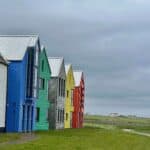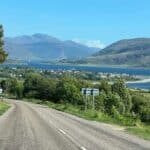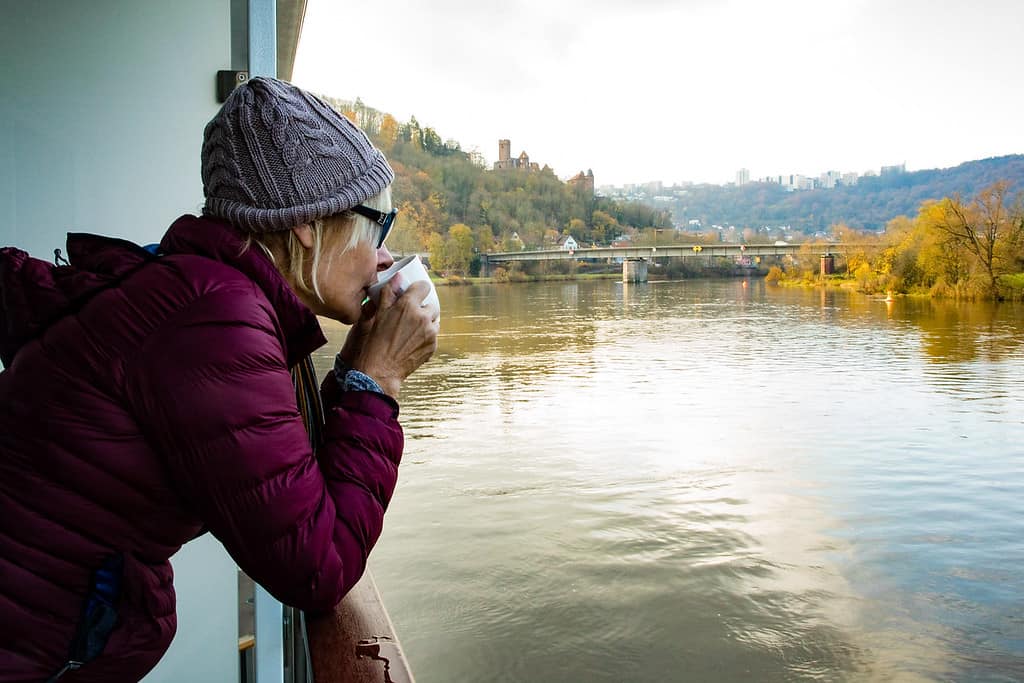Last Updated on July 1, 2024 by Sarah Wilson
One Day In Bologna
Bologna, located in northern Italy, is the capital of the Emilia-Romagna region. It’s located less than an hour inland from Italy’s east coast and roughly halfway between Milan and Florence.
An old university city, Bologna, with its porticoed walkways, beautiful piazzas, historic buildings, and medieval centre, is a great place to visit. One day in Bologna allows you to see the city’s highlights, but be sure to stay overnight to experience the food. Bologna is, after all, the culinary capital of Italy.
When I arrived in Bologna, I initially felt a bit disappointed. After spending a week in beautiful Florence doing a one-week intensive Italian course, I expected more of the same in Bologna.
But it’s a different kind of beauty here, far less polished; the city overall is less touristy and feels more authentic. By the time I left the city, of course, I loved Bologna.

Bologna – La Dotta, La Grassa, La Rossa
Over the years, Bologna has acquired many nicknames.
La Dotta, “the learned one”, refers to the university. Bologna is home to the world’s oldest university. Founded in 1088, it’s still in operation today.
La Grassa, “the fat one”. Bologna is famous for its food. My spoken Italian may need some work, but I know how to read a menu. But whatever you do, don’t ask for spaghetti bolognaise. In Italy, the meat-based sauce we call bolognaise is called ragù and is rarely served with spaghetti.
La Rossa, “the red one. Red, because of the red bricks of the mediaeval buildings in the historic centre and because of Bologna’s history as a stronghold for the Italian Communist Party.

What Is There To See In One Day And A Little Bit In Bologna?
Take A Free Walking Tour
I took a walk with Guru Walks. They currently offer nine different walking tours in Bologna, lasting on average around two hours. I did the ‘Discover the seven secrets of Bologna’ tour. I can’t tell you what the secrets are, or they will no longer be secrets. 😉
Piazza Maggiore

Piazza Maggiore is the main square in Bologna. In fact, it is one of the biggest and oldest squares in Italy.
From the 13th century, it was the centre of Bologna’s political and social life. Citizens would gather in the square to listen to the enunciation of new laws and witness capital executions.
Until the mid-1800s, the square was home to Europe’s largest open-air market.
Today, the square is filled mainly with tourists, a few street entertainers, the very helpful and informative Bologna Tourist Information, and the Basilica of San Petronio.
Basilica of San Petronio

Work began on the Basilica of San Petronio in 1390 for what was supposed to be the largest church in the Christian world. However, that project was soon abandoned as the then Pope did not approve of any church being larger than St. Peter’s Basilica in Rome.
However, this church that dominates the Piazza Maggiore is the 10th largest church in the world by volume. It’s dedicated to Petronius, the patron saint of Bologna. It may be the most important church in the city, but it’s not the cathedral which is just around the corner on Via dell’Indipendanza.
The front facade of the Basilica of San Petronio is very distinctive – the bottom half has coloured marble stonework, and the top half is plain with brown brickwork. Why? Because the cathedral still isn’t finished.
Palazzo dell’Archiginnasio
The 16th-century Palazzo dell’Archiginnasio was once the main building of the University of Bologna. Today it houses the famous 17th-century Anatomical Theatre, a fascinating well-preserved anatomical theatre where trainee surgeons once studied under the watchful eye of an inquisition priest!
The Towers of Bologna
Between the 12th and 13th centuries, medieval Bologna was filled with as many as 180 tall towers. Today, just over 20 remain. These towers were built by the local wealthy families to show off their wealth and power and also as a defence system.
And guess what, it’s not just Pisa that has a leaning tower.
The most famous towers in Bologna are located in the Piazza di Porta Ravegnana. They are named after two important Italian families and are recognised as symbols of Bologna.

The Asinelli Tower is open to the public. It’s 97.2 metres tall and was once used as a prison and a stronghold. The view from the top is said to be stunning; however, shock, horror, I did not climb this one. It’s almost the same height as the one I climbed up in Delft and I was terrified when I reached the top of that one!
The Garisenda Tower is only 48 metres and has an extremely noticeable tilt.
The Quadrilatero
The Quadrilatero is Italy’s oldest market and has been around since the Middle Ages. It’s just a two-minute walk from the Piazza Maggiore on Via Clavature.
It’s a fascinating market to explore and sample some delicious goodies, such as local cheeses, meats, homemade tortellini pasta and regional wines.

It gets extremely packed at weekends, so either go early or try another day. I headed back on a Monday morning before heading to the airport, but alas, not much was open then.
Once you’ve finished shopping, head to the Osteria del Sole for a refreshing glass of wine.
The Osteria del Sole is one of the oldest pubs in the world and has been in operation continually since 1465!
The Cathedral of San Pietro
The Cathedral of San Pietro on the Via dell’Indipendanza may not be as well known as the Basilica of San Petronio, and it is easy to walk past it without noticing as it blends in so well with all the other beautiful architecture. Still, it’s definitely worth a look inside.
It’s opposite the only 5-star hotel in the city, Bologna Grand Hotel Majestic – the hotel building used to belong to the church.
Basilica di San Domenico
The Basilica of San Domenico in Bologna is considered one of the city’s most beautiful churches and certainly deserves a visit. From the outside, it’s quite plain or the more technical description is austere Romanesque-Gothic style. Inside is the more cheery Bolognese Baroque style.

Love churches? There are plenty of them in Bologna. Apparently, the Basilica Santo Stefano is also well worth a visit. Also known as sette chiese (seven churches), but I was all churched out by now.
La Piazzola Market
The historic La Piazzola Market is located in the Piazza dell Agosto to the north of the city on the way to the train station. A market has been held here for hundreds of years.
It’s not a tourist market, so very authentic, with over 400 stalls selling anything from clothes, shoes, fashion accessories, foods, spices, flowers, pottery and jewellery. It’s fun listening to the locals shouting and haggling.
If you only have a day or so, the Quadrilatero is more interesting, but I was staying just around the corner from here, so I thought I’d have a quick nose around.
Hidden Canals of Bologna
Bologna has a 60-kilometre network of canals dating back to the 12th century. Most of the canals are covered now, but you get an odd glimpse of one or two as you explore the city.
My guesthouse La Finestra sul Canale overlooked one of the canals, but I stayed the one weekend when the canals were drained to clean them.
Explore the Porticoes
Not only is Bologna famed for its food but also its porticos -partially enclosed walkways lined with arches and columns. There are around 40 kilometres of porticos within the city.
The world’s longest portico, the Portico di San Luca, begins at Porta Saragozza and connects the city to the Sanctuary of the Madonna di San Luca located on top of the Colle della Guardia hill (289 meters above sea level). It’s 3796 metres long with a 215 meters elevation gain.

Monte della Guardia and the Sanctuary of Madonna di San Luca
The Sanctuary of Madonna di San Luca is one of Bologna’s oldest churches. Work started on the sanctuary in 1194 but was not finished until 1765. The church sits on top of the Monte della Guardia and offers excellent views of Bologna and the surrounding countryside.

If you don’t fancy the walk up to San Luca, you can take the San Luca Express tourist train from the Piazza Maggiore. On the way, you can listen to an audio guide pointing out what you’re seeing on your journey. I confess, yes, I was too lazy to walk up to the cathedral, so I took the tourist train. But I did walk back down to Bologna.
What To Eat In Bologna
Well, the food in Bologna was delicious. I don’t know if it was the best Italian food I’ve ever had. Personally, I think I still prefer Sicilian food.
I had the ‘Tagliatelle al Ragù – don’t ask for Spaghetti Bolognaise,’ which was delicious and also tried the Tortellini in Broth which tastes a lot better than it looks or the name suggests.

The green lasagne was perfect. It’s not vegetarian as the green in the name, but because the pasta is made with eggs, flour, and spinach.
For more information on what food you should try in Bologna, check out this post by the Bologna Guide.
Why not try a food tour while you’re in Bologna! Or a cooking class? If I had had more time, I would have. I love food tours. I’m a bit of a disaster when it comes to cooking, though.
For more ideas on tours within Bologna, check these out for inspiration.
Easy Day Trip From Bologna
The lovely historic town of Ferrara is just 30 minutes away from Bologna by train.
How To Get To Bologna
By plane
Bologna’s Guglielmo Marconi Airport is located six kilometres from the city centre.
By train
Bologna’s train station is close to the city centre, where both regional and long-distance trains operate. Follow the Via del’Indipendenza to the Piazza Maggiore. It’s about a 15-minute walk. Taxis are available outside the train station.
With high-speed trains, Bologna is just a 40-minute journey from Florence, one hour from Milan and just over two hours from Rome and Turin.
By Bus
Bologna’s bus station is in the city centre, just a short walk from the train station.
Have you been to Bologna? What’s your favourite place you have visited in Italy?
If you enjoyed this post, have a look at some of these other posts on Italy.
Learning Italian in Florence and Exploring the City
Is Genoa Worth Visiting?
One Day in Bari
Beautiful Towns and Villages in Umbria
One Day in Polignano a Mare, Puglia
The Best Things To Do In Sestri Levante, Italy
Alberobello, Puglia’s Famous Trulli Town
Two days in Verona
Orvieto
Discover Spello – A Gorgeous Umbrian Hill Town
Disclaimer: This article may contain affiliate links, where I receive a small commission that helps towards the cost of running this blog but don’t worry, there’s no extra cost to you.








I so want to visit Italy. Bologna looks like a great city to visit. Love that it is less touristy. Also, love that one of the city’s nicknames is “the learned one.”
I would love to spend a day or week in Bologna. I’ve been to Italy, but we didn’t make it here. Love that it’s touristy and love the history – cool fun fact that it’s gone to the world’s oldest university.
Oh I do love Bologna, I feel its often overlooked in favor of its more famous neighbors. But we were really glad we visited, the food is especially good here too.
We were glad we used Bologna as a base to explore the city and the surrounding area. We were sad we did not get to the top of the tower for the stunning view. Next time we will plan our timing so we don’t miss market day. And we did not even know about the hidden canals. All great reasons to go back one day.
I’ve never heard of Bologna, and I’ve never been to Italy, but it’s high on my bucket list! Thanks for opening my eyes to something new 😊. Great list – I always love those free walking tours and have a few booked for my upcoming Scotland trip (one through Guru Walks too!). Xx Sara
Bologna is one of the few important cities that I haven’t seen in Italy and shame on me! Mostly because some of my fav food comes from this region… And your article gives me all the wanderlust, I really need to make it happen!!
I spent a great day trip in Bologna when I visited the city a few years ago! Bologna is such a beautiful destination and the food is insanely delicious! 🙂
I loved reading this article. I wanted to go to Bologna when I was traveling by train to Venice. We didn’t get time to make a stop. Now I really wish we did! I will have to see it next time I’m in Italy, now that I have some great 1-day trip suggestions.
Well just the food descriptions make me want to visit! I will definitely add this to my Italy bucket list. It looks absolutely beautiful!
I spent a day exploring Bologna while my husband had business meetings a couple of years ago. I loved all of the porticos.
Eating is my favorite part of traveling! That Bologna food looks amazing!
Great write up. Looks like a lovely place for a short vacation!
Bologna sounds like such an incredible place. If I was there, I think I’d just spend most of my time in Piazza Maggiore! Thanks for this guide – it’s beautifully written 🙂
What an amazing guide! Going to Italy again next summer so I’ll pin this for later. Thank you!
Oooh this looks like so much fun. I like the ‘unpolished’ places like this so much more than tourist hotspots. I am veeery tempted by the pasta in Quadrilatero, and I love the idea of explore the canals and following the walking tour you did.
Great post!
I would love to go! When is the best time of year to visit?
Bologna is a great all-year-round city to visit but it can get really cold in winter. I’d suggest spring or autumn as the best time.